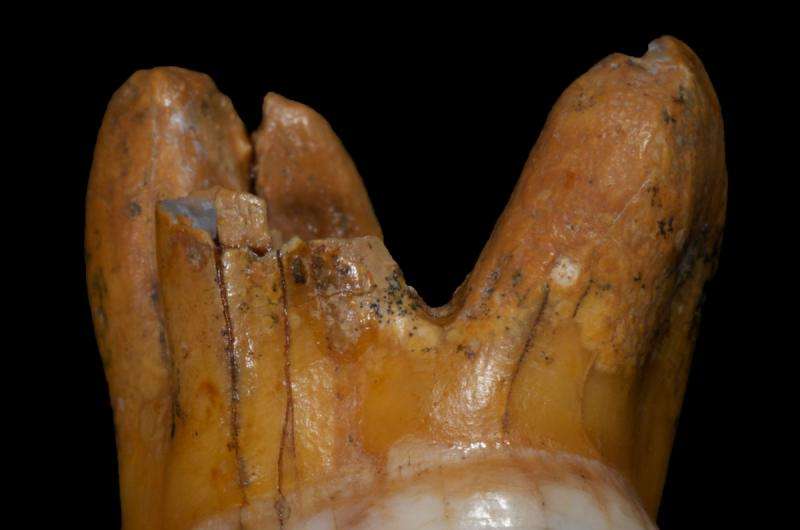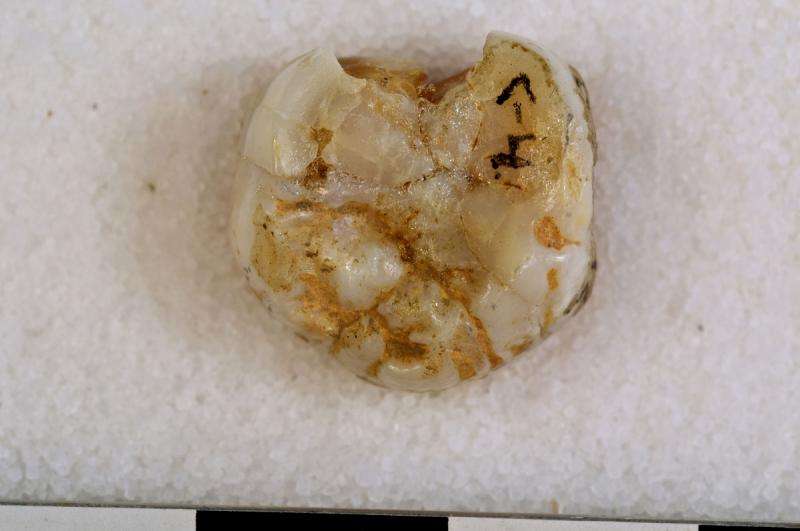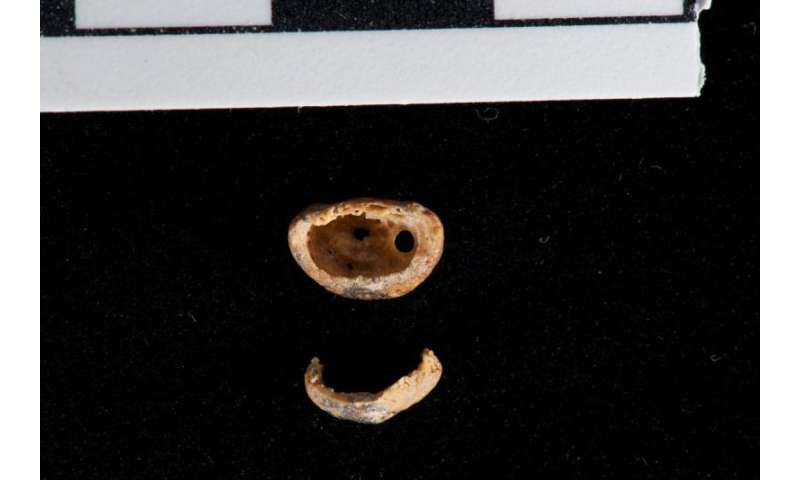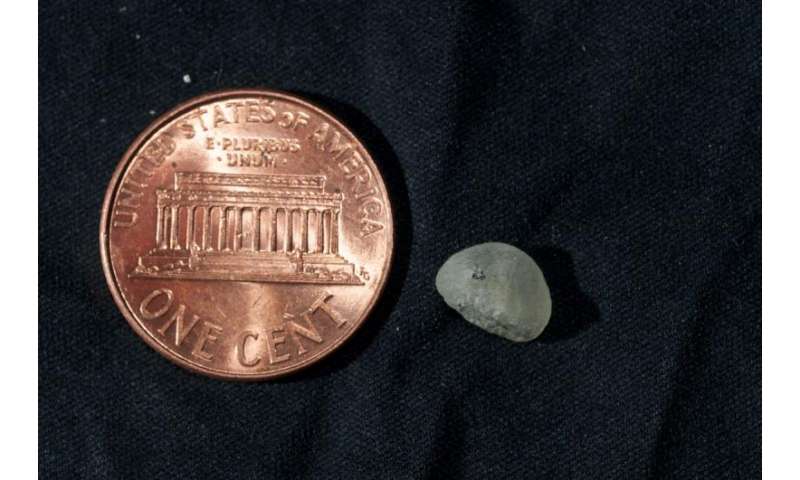November 18, 2015 report
DNA analysis of Denisovan molars offers more clues about ancient human relative

(Phys.org)—A team of researchers with members from Germany, Canada and Russia has conducted a DNA analysis of two molars found in the Denisova caves in Siberia shedding more light on the origins of the Denisovans—a hominin species that lived or at least visited Siberia approximately a hundred thousand years ago. In their paper published in Proceedings of the National Academy of Sciences, the team describes their analysis and what they have learned about the extinct species.
The existence of the Denisovans was discovered back in 2008 when a team of scientists found a finger bone and a tooth in the Denisova caves in the Russian mountains. Two years later the bones were identified as belonging to the same species—in this new effort, the researchers have sequenced the nuclear and mitochondrial DNA from the first molar and from another that was found more recently, and have found, among other things, that the bones came from three different individuals, from different time periods—the oldest from approximately 110,000 years ago, which suggests they were around during the time of Neanderthals, and of course, early humans.
The size of the teeth suggests that the Denisovans had very large jaws and more likely resembled Neanderthals than humans. The team also found that the Denisovans had nearly as much genetic diversity as modern humans, setting them apart from Neanderthals—and modern Melanesian humans have approximately 5 percent of their genome, strongly hinting that they interbred with humans. The huge time span (60,000 years) between the times the individuals that once owned the teeth were alive suggests also that the Denisovans were in Siberia for a very long time, either living there, or visiting during warm months.

The Denisovans are considered to be cousins of modern humans, occupying a branch of the family tree-but, like the Neanderthal, they eventually disappeared. It is believed that they were likely hunter-gatherers, and possessed characteristics that have been passed down to some human groups, such as the ability to live at high altitudes. The discovery of the Denisovan species has led to speculation about other unknown human relatives such as the origins of a human-looking tooth recently unearthed in China.
-

Denisova 3 finger bone. Credit: Bence Viola. -

Denisova 3 finger bone next to a penny for scale. Credit: Bence Viola.
More information: S. Sawyer et al. Nuclear and mitochondrial DNA sequences from two Denisovan individuals, Proceedings of the National Academy of Sciences (2015). DOI: 10.1073/pnas.1519905112
Abstract
Denisovans, a sister group of Neandertals, have been described on the basis of a nuclear genome sequence from a finger phalanx (Denisova 3) found in Denisova Cave in the Altai Mountains. The only other Denisovan specimen described to date is a molar (Denisova 4) found at the same site. This tooth carries a mtDNA sequence similar to that of Denisova 3. Here we present nuclear DNA sequences from Denisova 4 and a morphological description, as well as mitochondrial and nuclear DNA sequence data, from another molar (Denisova 8) found in Denisova Cave in 2010. This new molar is similar to Denisova 4 in being very large and lacking traits typical of Neandertals and modern humans. Nuclear DNA sequences from the two molars form a clade with Denisova 3. The mtDNA of Denisova 8 is more diverged and has accumulated fewer substitutions than the mtDNAs of the other two specimens, suggesting Denisovans were present in the region over an extended period. The nuclear DNA sequence diversity among the three Denisovans is comparable to that among six Neandertals, but lower than that among present-day humans.
Journal information: Proceedings of the National Academy of Sciences
© 2015 Phys.org



















